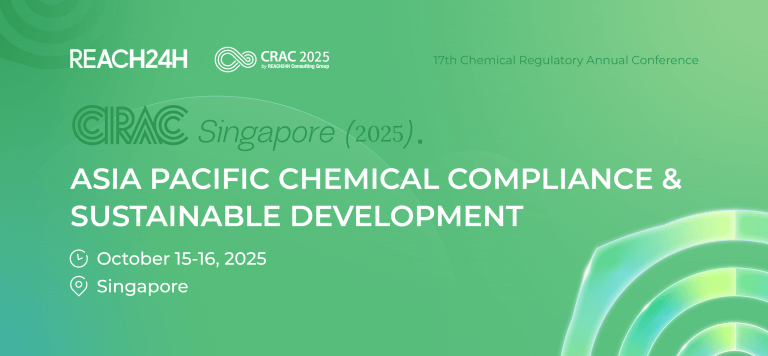Introduction
In today's chemical industry, the development and commercialization of new substances are particularly critical. However, before these new chemicals, which carry significant commercial value, can hit the market, they must comply with health and environmental regulations. In the United States, that framework is the Toxic Substances Control Act (TSCA). A key challenge for companies during the TSCA submission process is protecting their Confidential Business Information (CBI) while meeting their legal obligation to disclose information.
Protecting CBI isn't merely about securing your R&D investment; it's about safeguarding your market position and future revenue. The release of sensitive details, including precise chemical structures and unique manufacturing processes, to a competitor could lead to product replication, lost market share, or even a failed business model. Therefore, a thorough understanding of TSCA's CBI protection rules and the submission process is essential for any chemical company operating in the U.S. market.
TSCA and the Evolution of CBI Protection
Enacted in 1976, TSCA was designed to regulate how chemical substances are produced, processed, and used in the U.S. to prevent unreasonable risks to human health and the environment. From the start, TSCA recognized the importance of trade secrets and included provisions for CBI protection.
However, the original TSCA had its flaws, including inconsistent CBI rules, a lack of transparency, and a large backlog of CBI requests. To fix these issues, Congress passed the landmark Frank R. Lautenberg Chemical Safety for the 21st Century Act in 2016. This revision, known as the "TSCA Amendment" or "Lautenberg Act," greatly enhanced the EPA's regulatory power and overhauled the CBI protection system.
What Counts as CBI?
Under TSCA, CBI is any commercially valuable, non-public information that, if disclosed, would cause significant commercial harm to the owner. The EPA has strict requirements for what qualifies. To claim information as CBI, a company must prove it is:
Non-public: The information isn't generally known or easily obtained within the industry.
Commercially valuable: The information has independent economic value because it isn’t public.
Reasonably protected: The company has taken reasonable steps to keep the information a secret.
Common Types of CBI under TSCA
Specific Chemical Identity (SCI): This is the most sensitive type, including the exact chemical name, CAS number, and molecular structure. Releasing the SCI makes it easy for competitors to copy your product.
Production Volume and Location: Details on annual production, plant locations, and manufacturing capacity. This data reveals a company's market share and scale.
Use Information: Specific applications, market segments, and how a chemical is used. This can help competitors identify your customers and target markets.
Process Information: Your proprietary synthesis routes, reaction conditions, purification methods, and equipment. These are the core of your technology and cost advantage.
Customer and Supplier Information: Lists of key customers, sales channels, and suppliers. This shows your supply chain and market network.
Marketing and Business Plans: Unreleased market analyses, pricing strategies, and sales forecasts.
How TSCA Protects Your CBI
TSCA and its regulations have created a multi-layered system to protect CBI:
Active Claim and Detailed Justification
When submitting a Pre-manufacture Notice (PMN) or other documents, you must clearly mark all CBI and, more importantly, provide a detailed, specific justification for each claim. This justification must explain:
Why the information is non-public.
What its commercial value is.
The specific, concrete harm your business would suffer if it were disclosed (e.g., lost sales, reduced market share, wasted R&D costs).
The steps you've taken to keep it secret.
Simply checking a box or providing a generic reason is likely to get your claim rejected, forcing you to release the information.
"Need-to-Know" Principle and Internal Controls
Within the EPA, access to CBI is strictly limited. Only officials who absolutely need to see the information to do their jobs are authorized to access it. They are trained on how to handle CBI and are bound by strict internal rules. The EPA also requires external contractors and partners to sign strict confidentiality agreements and maintain robust security systems.
Limited Disclosure and Redacted Public Versions
TSCA prohibits the EPA from disclosing CBI without legal cause. If information must be released (for example, under a Freedom of Information Act, or FOIA, request), the EPA will first create a redacted version for the public. For a claimed CBI production volume, they might publish a range (e.g., "10,000-100,000 lbs") instead of the exact number. For a claimed CBI use, they might use a broader category like "polymer additive" instead of a specific application.
Special Protection for Specific Chemical Identity (SCI)
The Lautenberg Act added extra requirements for SCI claims, reflecting the public's desire for more transparency.
Mandatory Generic Name: If you claim the SCI as CBI in a PMN, you must provide a "generic name" for public disclosure. This name should be specific enough for the public to understand the chemical's function but not so specific that it gives away the exact SCI. For example, for a new acrylate monomer, you could use "modified acrylate monomer."
Ten-Year Sunset: This is a major reform. As of 2020, all new SCI CBI claims have a ten-year expiration date. After ten years, the protection automatically ends unless the company re-submits the claim to the EPA and proves the information still qualifies as CBI. This system aims to reduce the CBI backlog and gradually increase public access to chemical information.
Best Practices: Making Your CBI Claim Stick
To navigate TSCA's strict CBI requirements, companies should take a proactive, strategic approach:
Identify CBI Early: Before you start your TSCA submission, bring together your R&D, legal, and business teams to review all information and identify what is truly confidential. Don't wait until the last minute.
Prepare Strong, Specific Justifications: This is the most crucial step. For each CBI claim, prepare detailed written proof explaining its commercial value and the specific, quantifiable harm that would result from disclosure. Support your claims with credible business data and analysis.
Craft a Clever Generic Name: The generic name should balance meeting EPA requirements with protecting your trade secrets. It should include the chemical class, main functional groups, and use, but avoid specific details like atom counts or branching structures.
Avoid Over-Claiming: Don't claim everything as CBI. Over-claiming increases the EPA's review burden, can delay your submission, and might harm your credibility with the agency. Things like common toxicological data or general physical properties are usually not considered CBI.
Implement a Strict Internal CBI Management System: Companies should develop and enforce a robust process for managing CBI, including:
- Employee Training: Ensure all employees who handle sensitive information understand the importance of CBI and related regulations.
- Information Classification: Categorize internal information based on its CBI level.
- Access Control: Restrict access to CBI to ensure only authorized personnel can view it.
- Physical and Cybersecurity: Adopt advanced physical and network security measures to prevent CBI leaks.
- Non-Disclosure Agreements: Sign strict NDAs with all external partners, such as consulting firms and laboratories.
Protecting your Confidential Business Information (CBI) during a TSCA new substance submission isn't just a matter of legal compliance—it's a strategic move. By safeguarding your company's core competitive advantage, you ensure long-term success. By understanding TSCA's CBI definitions, protection mechanisms, and submission process, and by building a robust internal management system, your company can confidently balance its legal obligations with the vital need to protect its secrets.
If you have any questions in this regard, please feel free to contact us at customer@reach24h.com.





